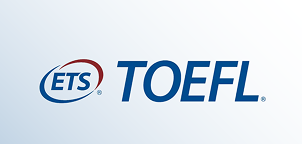Java Basic Programs
Begin your journey to mastering Java basic programs today! Enroll in our free course and develop essential programming skills that will help you excel in your career

Ratings
Level
Learning hours

Learners
Skills you will learn
About this course
In this course, we will cover essential topics that every beginner must learn to master the basics of Java programming. You will learn how to write programs for Factorial, Fibonacci Series, Palindrome, Reversal of a String, Prime Number, Armstrong Number, Pattern Programming, Matrix multiplication, Call by Value, and Sorting of an Array. The course starts with the introduction of each topic, followed by an explanation of the logic and implementation of the program. You will also get the opportunity to practice what you have learned through practical examples and exercises.
Additionally, this course provides various case studies and projects, which will help you to understand how to apply the learned concepts in real-world scenarios. Furthermore, there will be demonstrations of how to use the programs and solve different problems using them. By the end of this course, you will have a good understanding of Java programming basics, which will help you to write efficient code and solve complex problems with ease. Join us now and start your journey to become a Java programming expert!
Explore our Software Engineering Courses today.
Course Outline
Factorial in Mathematics is a mechanism in which the product of all the whole numbers less than and equal to the given number is calculated. For example: 3! = 6
Fibonacci Series is the series of numbers obtained by adding the previous two numbers. For example: 1 1 2 3 5 8 13
A palindrome is a sequence of numbers or characters similar to its reverse. The number/character is similar when read from the front and the end. For example: 12321, 34543
A string is a set of characters. Reversal of a String is a program where each character of a string is reversed. For example: string = hello, reversed string = olleh
The number is divisible by 1, which is called the prime number. A prime number is a program to find if the given number is prime or not.
 UPGRADE
UPGRADE
Recommended university programs
Frequently Asked Questions
Will I receive a certificate upon completing this free course?
Is this course free?
Is Java different from C++?
Yes, they are different.
Both Java and C++ have been heavily used for the last 4-5 decades. They both follow the same syntax. Both are based on the object-oriented concept and are used in major enterprise platforms of the world. Hence converting a program from Java to C++ and vice versa is easy as the style and syntax of both are very similar.
However, despite these similarities, the two languages are very different. Java is an interpreted language, while C++ is a compiled language. Memory management (garbage collection) is automatic in Java, whereas in C++, memory has to be managed manually. Java is memory safe, i.e., any assignment of values outside of the given array parameters will result in an error, whereas C++ is not hardbound on this. Java being more of an interpreted language, is slower than C++. C++ code gets compiled to binaries and is faster to run than Java programs. Java has had multithreading support since its inception, whereas C++ has proper multithreaded support added in the C++11 revision. Java has no pointers, whereas C++ has. C++ has both global and local namespaces, whereas Java has no concept of the namespace. Java code is portable, whereas C++ code has to be compiled on each platform before running.
Is Java Code Portable?
Yes, Java programs are portable across hardware platforms and operating systems. It is portable because of many reasons. The Java language is completely specified, with all data-type sizes and formats being included in the language definitions.
Secondly, the Java class library is available on any machine with a Java runtime system making it possible to use the same class library on every platform. Thirdly, Java works as byte code. The JRT or Java runtime system does not compile your source code directly into machine language, an inflexible and no portable representation of your program. Instead, Java programs are translated into machine-independent byte code. The byte code is easily interpreted and can be executed on any platform having a Java runtime system.
What makes Java Secure?
The Java language is very secure because it is inherently difficult to write incorrect code or viruses that can corrupt or steal your data or harm hardware such as hard disks. There are two directions that make Java programs secure. We have no pointer arithmetic, garbage collection, array bounds checking, and no illegal data conversions at the interpreter level. And at the browser and applet level, we have no local file I/O, sockets bound to the host only, and denial of calls to native methods.
Other IT & Software tutorials for you
Java Basic Programs
Java is a popular programming language that is widely used for developing web applications, mobile apps, and desktop applications. It is a versatile language that can handle complex programming tasks with ease. In this article, we will discuss some of the basic programs in Java.
Factorial Program
The factorial program is one of the fundamental programs in Java. It calculates the factorial of a given number. The factorial of a number is the product of all the numbers from 1 to that number. For example, the factorial of 5 is 54321, which is equal to 120.
Fibonacci Series Program
The Fibonacci series program is another important program in Java. The Fibonacci series is a sequence of numbers in which each number is the sum of the two preceding numbers. The first two numbers in the series are 0 and 1. The next number is the sum of the two preceding numbers. For example, the first 10 numbers in the Fibonacci series are 0, 1, 1, 2, 3, 5, 8, 13, 21, and 34.
Palindrome Program
The Palindrome program is used to check whether a given word or phrase is a palindrome or not. A palindrome is a word or phrase that is spelled the same way forwards and backward. For example, the words "racecar" and "level" are palindromes.
Reversal of a String Program
The Reversal of a String program is used to reverse a given string. This program is used to reverse a word, phrase, or sentence. For example, if the input is "Hello World", the output will be "dlroW olleH".
Prime Number Program
The Prime Number program is used to check whether a given number is a prime number or not. A prime number is a number that is divisible only by 1 and itself. For example, 2, 3, 5, 7, 11, and 13 are prime numbers.
Armstrong Number Program
The Armstrong Number program is used to check whether a given number is an Armstrong number or not. An Armstrong number is a number in which the sum of the cubes of its digits is equal to the number itself. For example, 153 is an Armstrong number because 1^3 + 5^3 + 3^3 = 153.
Pattern Programming
Pattern programming is used to print various patterns using loops in Java. It is a simple program that is used to understand the basic concepts of loops in Java.
Matrix Multiplication Program
The Matrix Multiplication program is used to multiply two matrices in Java. It is a program that is used in various scientific and mathematical calculations.
Call by Value Program
The Call by Value program is used to pass the value of a variable to a function. It is a simple program that is used to understand the concept of passing values to a function in Java.
Sorting of an Array Program
The Sorting of an Array program is used to sort an array of numbers in ascending or descending order. It is a program that is used in various applications to sort data.
Conclusion
In this article, we discussed some of the basic programs in Java. These programs are essential for understanding the fundamental concepts of Java programming. By understanding the implementation of these programs, you can develop more complex programs in Java.

























.jpg)






.jpg)



.jpg)



